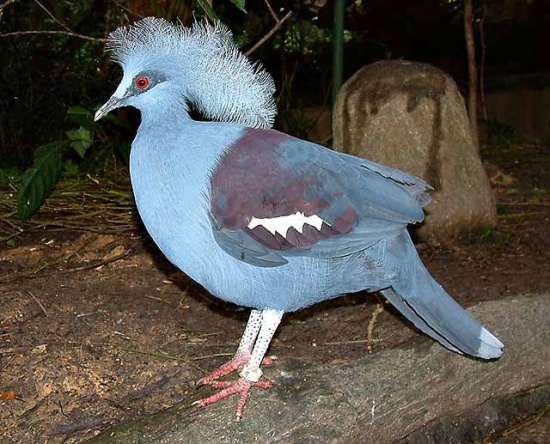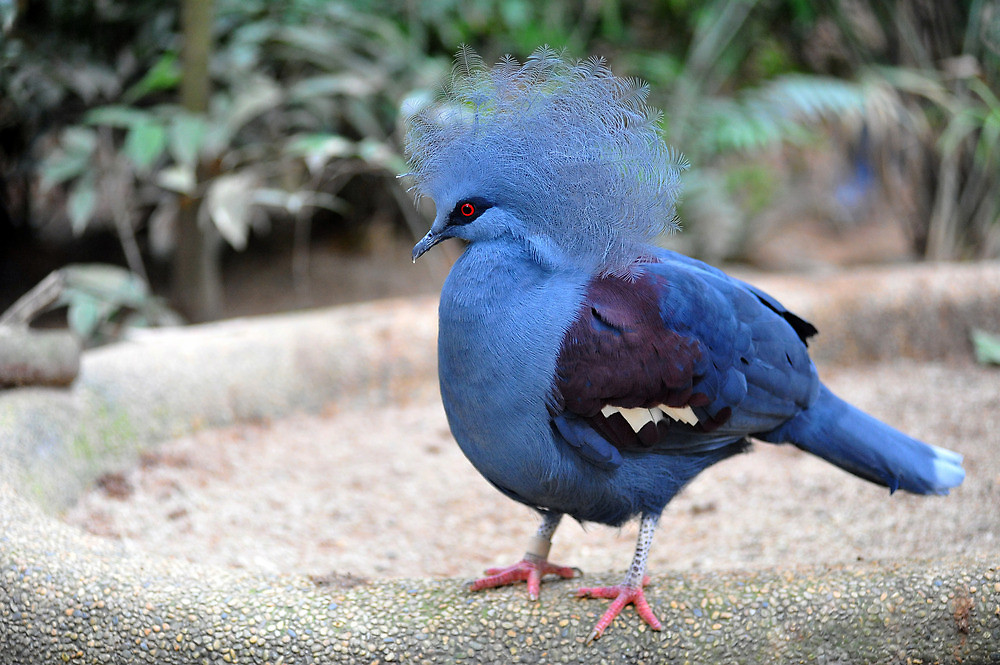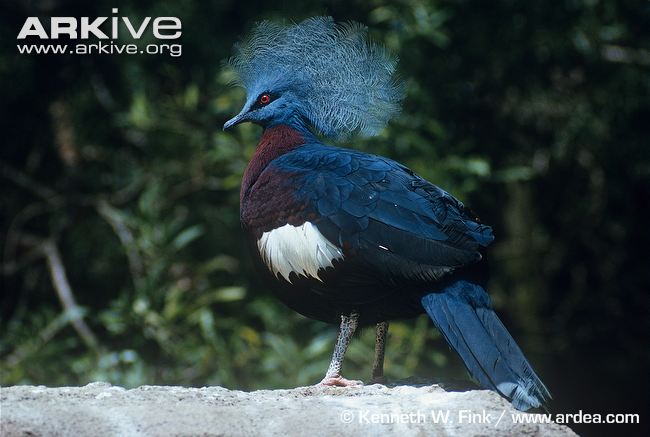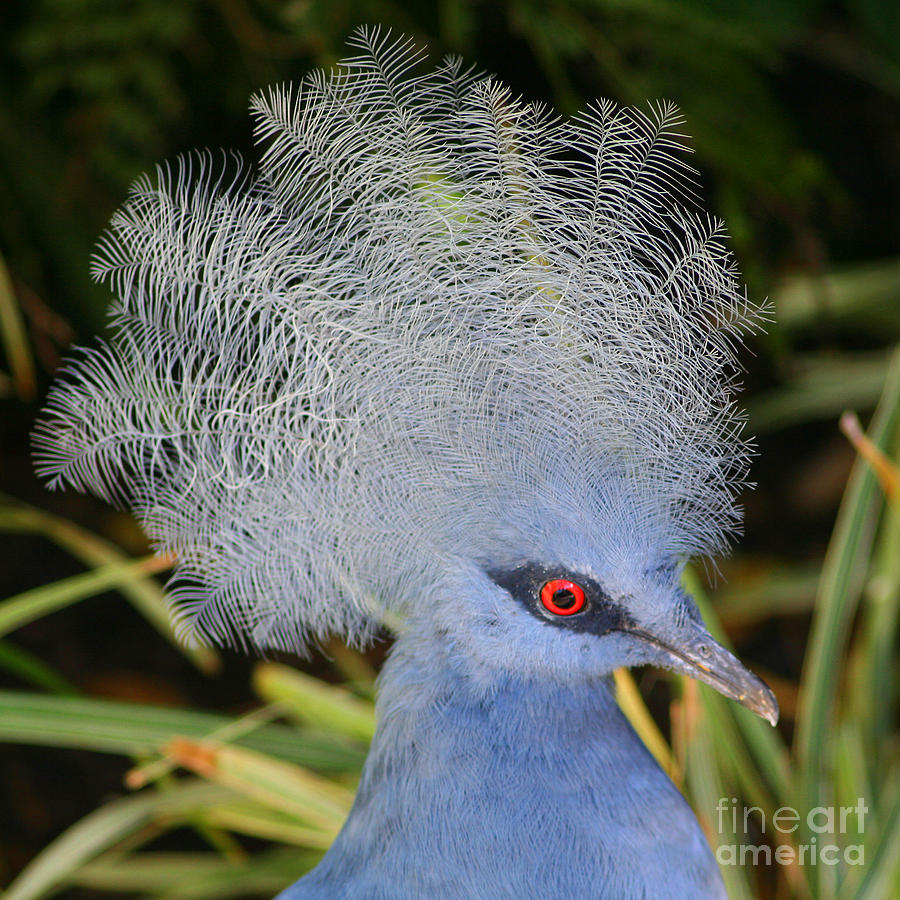
Goura cristata
SUBFAMILY
Gourinae
TAXONOMY
Columba cristata Pallas, 1764, Banda, error _ Fak-fak on Onin
Peninsula, New Guinea. Two subspecies.
OTHER COMMON NAMES
English: Goura; French: Goura couronne; German: Krontaube;
Spanish: Gura Occidental.
PHYSICAL CHARACTERISTICS
Largest pigeons (up to 4 lb [2 kg]), with delicate gray plumage
and a fan-like crest.
DISTRIBUTION
Crowned pigeons are confined to New Guinea.
HABITAT
Lowland rainforest.
BEHAVIOR
In display the male spreads and erects his tail, partly opens his
wings, then bows his head quickly into an inverted position. In
precopulatory display, the male bows and dances with upstretched
wings. No display flight.
FEEDING ECOLOGY AND DIET
Food includes fruits, berries, and probably large seeds. Birds
forage on the ground in groups of two to 10, according to
Gilliard and Lecroy. When disturbed they fly noisily up into
nearby trees and characteristically look back down at a passerby.
REPRODUCTIVE BIOLOGY
A large nest built from strong sticks is made up to 33 ft (10 m)
in a tree. One egg is laid and incubated for 28 days. Nestling
time lasts up to 36 days. The male will feed young much longer.
CONSERVATION STATUS
Vulnerable. Danger comes from logging, and hunting for
meat, plumes, and trading. Crowned pigeons are protected
by law.
SIGNIFICANCE TO HUMANS
Local people use feathers for decoration. Esteemed as an aviary
bird.
Other popular Animals
Photo Gallery of - Western crowned-pigeon




 Animalia Life
Animalia Life